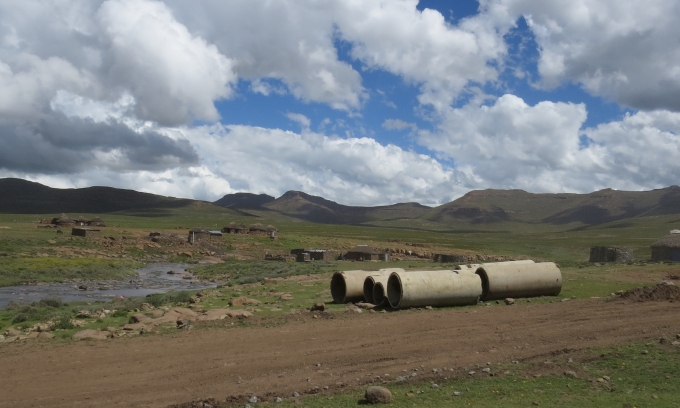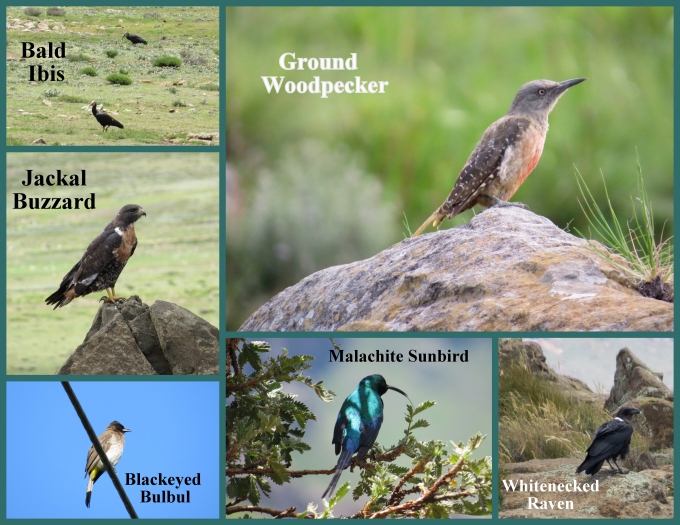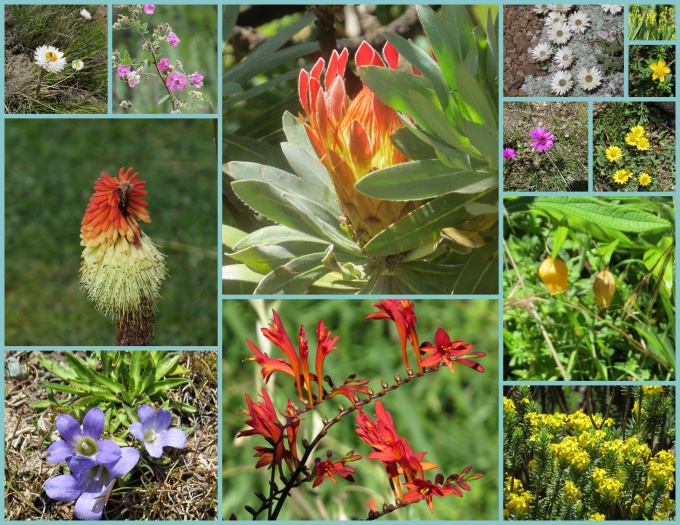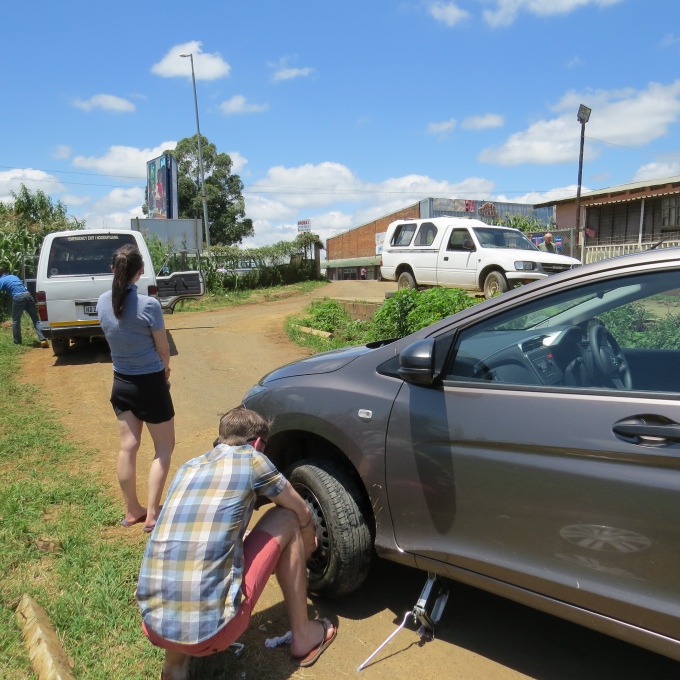Kingdom in the Sky
Having entered Lesotho, Tsebo, our guide, was keen to educate us a bit about the country and its people. Referred to as the Kingdom in the Sky, Lesotho, about the size of Maryland, is all “up”. In fact, it has the highest low point of any country in the world … 1400m (4550') at the junction of the Orange and Makhaleng Rivers. It is, indeed, a tiny kingdom with King Letsie III as its monarch. It's a poor, poor country (though the king seems to do okay) with an average personal income of $2,200/per year. Most Basotho people live at subsistence level and shepherding seems to be the most prevalent occupation outside the capital city of Maseru. People of Lesotho are called Basothos, their language is Sesotho and their currency is the loti, although South African rands are readily accepted.

We were in the eastern Lesotho Highlands, a harsh, cold, wet environment. The tiny village of Mokhotlong was barren. Thatch and tin-roofed stone huts lined a deeply rutted, muddy road. The landscape was treeless with vast expanses of rocky outcrops and soggy marshes. The mountains rose above and around us.

The Basotho shepherds were all wrapped in traditional blankets. Many wore hats and balaclavas covering their faces, protecting them against the ever-present cold wind, the harsh sun and the dust that blew. Heavy rubber boots were worn to keep their feet dry whilst traversing the wetlands tending their livestock.

Tsebo knew several of the shepherds and we stopped along the way to chat. They were friendly and welcomed visitors with shy smiles. We offered candy bars and granola bars left over from our lunch and they were gratefully accepted. Sweets are rare commodities, we were told.

Some were pleased to show off the sheep they were tending.

Others allowed us into their very basic mud-floored, thatch-roofed huts. We crawled into the low entry huts on hands and knees and were packed in tightly as Tsebo elaborated on the life of shepherds … a hard, hard life without many alternatives. For six months at a time, the shepherds remained with their herds, then after a day or two to visit families, they returned to their flocks. I might add that Drakensberg Tours, as part of their Fair Trade tourism philosophy, provides blankets and other basics to the shepherds in trade for sharing a glimpse of their lifestyle with visitors.

In tiny Skiring village, we visited Me Fitelena. Tsebo instructed us on the formal way to present ourselves as we entered. We said “koo-koo”, (like knock-knock) and after being acknowledged, we entered and sat on a long bench and were served fresh bread and the local maize beer, both of which were delicious. Me Fitelena also had local crafts for sale and, of course, we did our best to help the local economy.

We had brown bag lunches at Black Mountain with views of Thabane Ntlenyana, 3482m (11,317'), the highest peak in southern Africa, only a few miles away.

The last stop in Lesotho was at Sani Top, the highest pub in Africa. We sampled the local commercially brewed beer, Maluti.

The views from Sani Top were absolutely stupendous. What goes up, must eventually come down. Heading back down the steep Sani Pass was a hair-raising adventure as well. Hop aboard the Land Rover and we'll begin our slow descent.



















